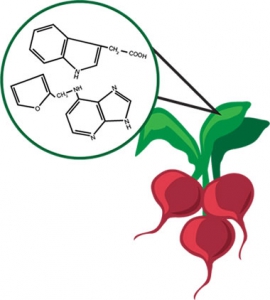Research: Plant Biology

Our goal is to apply DiSTAP sensor technology to study the production of plant hormones and secondary metabolites in plants and monitor changes in their production when plants are exposed to various environmental stresses and nutrient deficiency conditions. This will enable early diagnosis and treatment of crops by urban farmers and help develop new techniques to engineer plants with highly desirable properties for urban farming such as high density planting, better nutrition acquisitions, and disease resistance.
Understand Plant Signalling and Response
A number of signalling events in plants involve the propagation of signals from the site of perception (local leaf) to other parts of the plant (systemic leaves) to trigger pathway gene expression thereby enhancing a plant’s adaptation to and fitness under stress. The CHUA lab is interested in the study of the plant that can recognize environmental stress and deliver the signal to systemic parts through Reactive Oxygen Species (ROS) and Ca2+ wave. Even though a number of researches have been reported recently, the detailed mechanism is still unclear because of the limitation of ROS detection in living plants. Using single-walled carbon nanotube-based sensor for ROS detection developed in the STRANO lab, we understand in more details the mechanism of plant stress response mediated by ROS under different biotic and abiotic stress conditions like wounding, heat stress, pathogen attack etc. Results from these studies will contribute to our knowledge in systemic signalling in plant stress responses and help develop strategies to mitigate crop losses due to environmental stress
Plants produce a specific set of secondary metabolites in response to different stresses to protect themselves. Metabolite profiling is an emerging field that can help indicate plants physiological health status by analysing plant secondary metabolites. Raman spectroscopy system developed in the RAM lab is used to identify the production of such stress-induced metabolites which will aid in early stress detection and provide an opportunity to growers to alleviate the stress before irreversible damage to plants occurs.
Plant hormones control various aspects of plant growth and development. Dr. DAISUKE lab have discovered novel genetic and pharmacological targets in plant stress responses and studied signal transduction systems. Dr. Daisuke group generate a series of mutants or transgenic plants that accumulate varying levels of the target metabolites and hormones. Levels of target molecules in these transgenic plants will be independently determined by analytical methods to establish a correlation with DiSTAP sensor signals.
Engineer Rice Plant with Less Accumulation of Toxic Elements
Arsenic (As) and Cadmium (Cd) are toxic elements and their entry into the food chain has a serious effect on food security and public health. Rice as an important staple food is a major source of As and Cd intake. As(III) is more bioavailable than As (V) and is the dominant form in paddy fields. As(V) is taken up by phosphate transporters. In root cells As(V) is rapidly reduced to As(III). As(III) uptake shares the highly efficient silicon pathway of entry to root cell and efflux towards the xylem. Some As(III) may be sequestered in the vacuoles of root cells or leaked out of the stele, thus decreasing As accumulation in rice shoots and grains. Similarly, several transporters involved in Cd uptake by roots, root-to-shoot translocation, and distribution to the grain have been identified in rice. Dr. YIN group investigates engineering rice plants with low As and Cd in rice seeds using genome editing and transgenic approaches. Rice lines with seeds that have low Cd and As accumulation will be selected and used for breeding of next generation of Temasek Rice.
